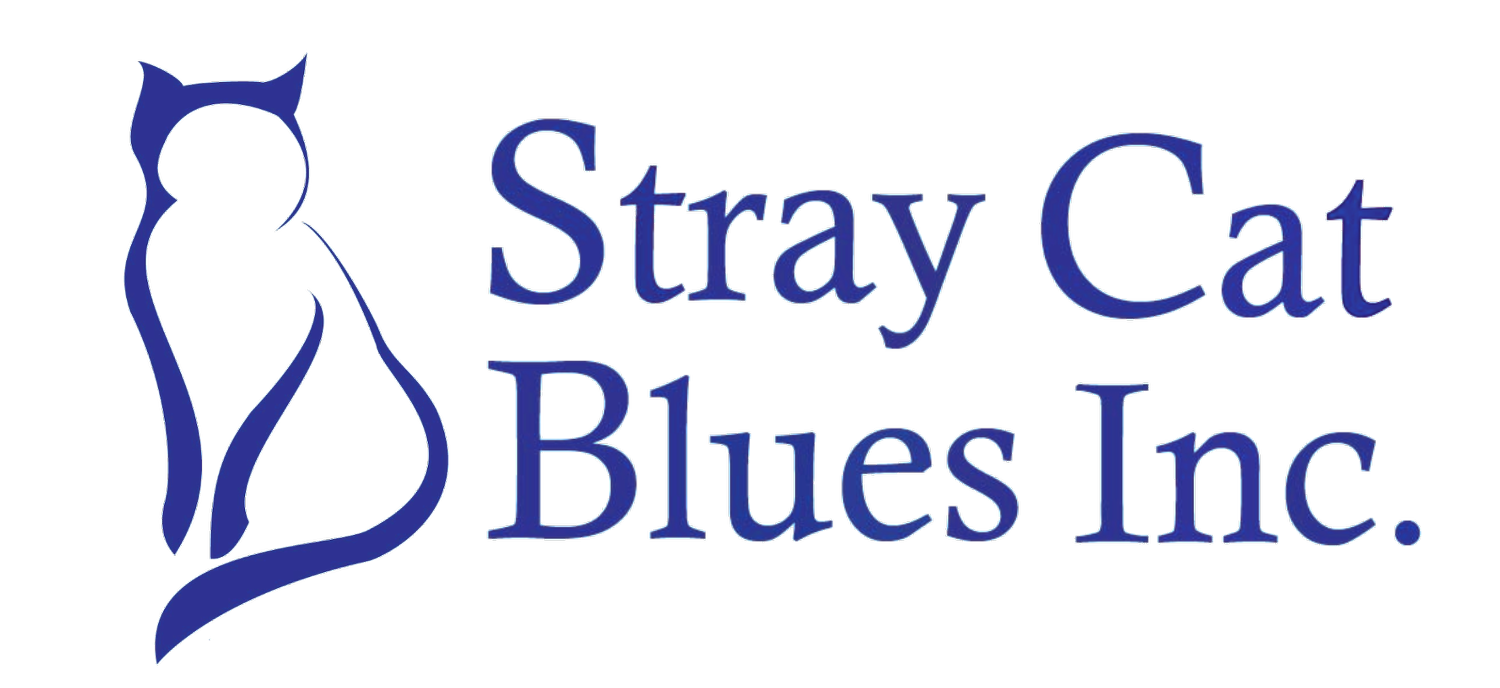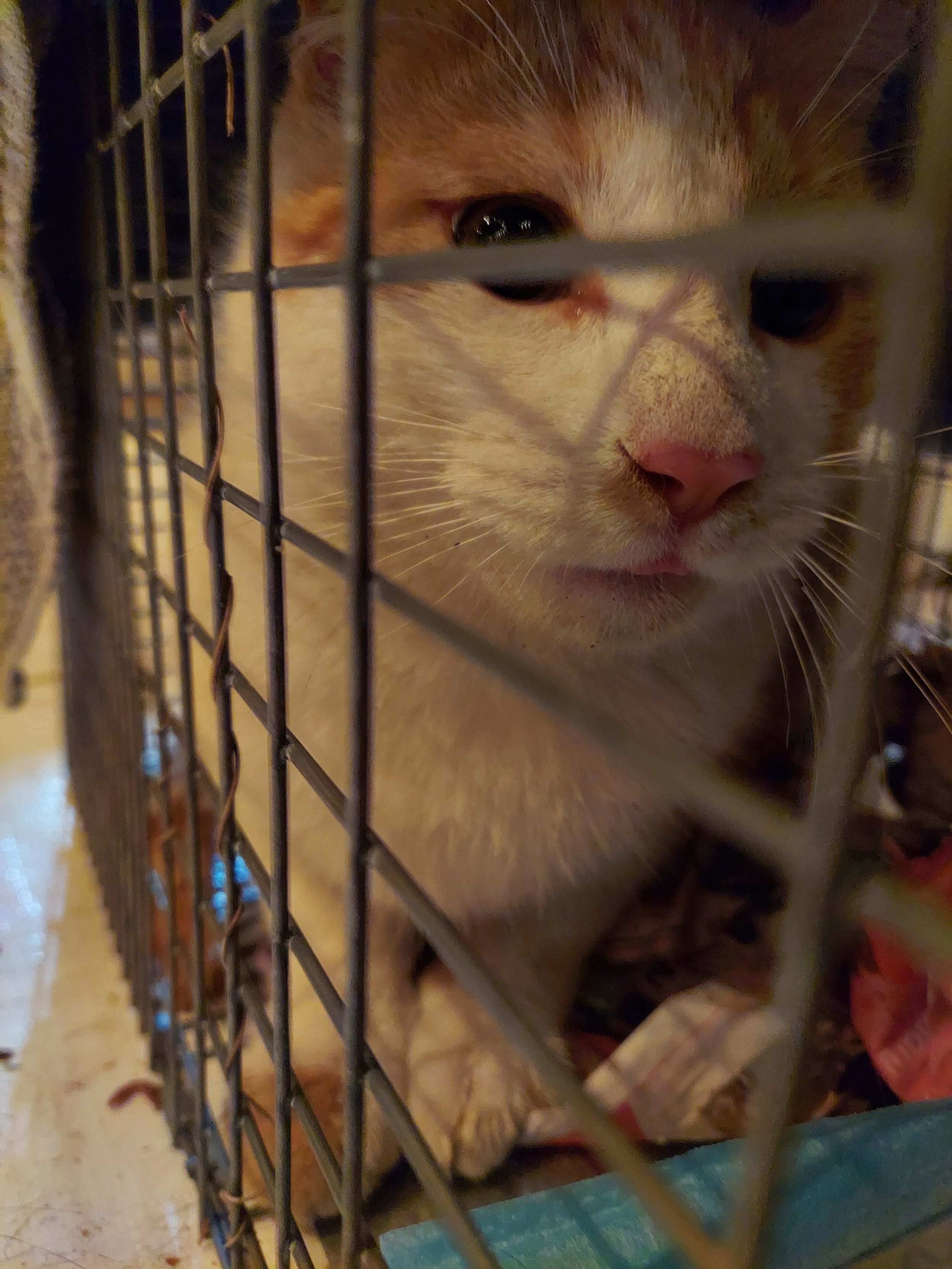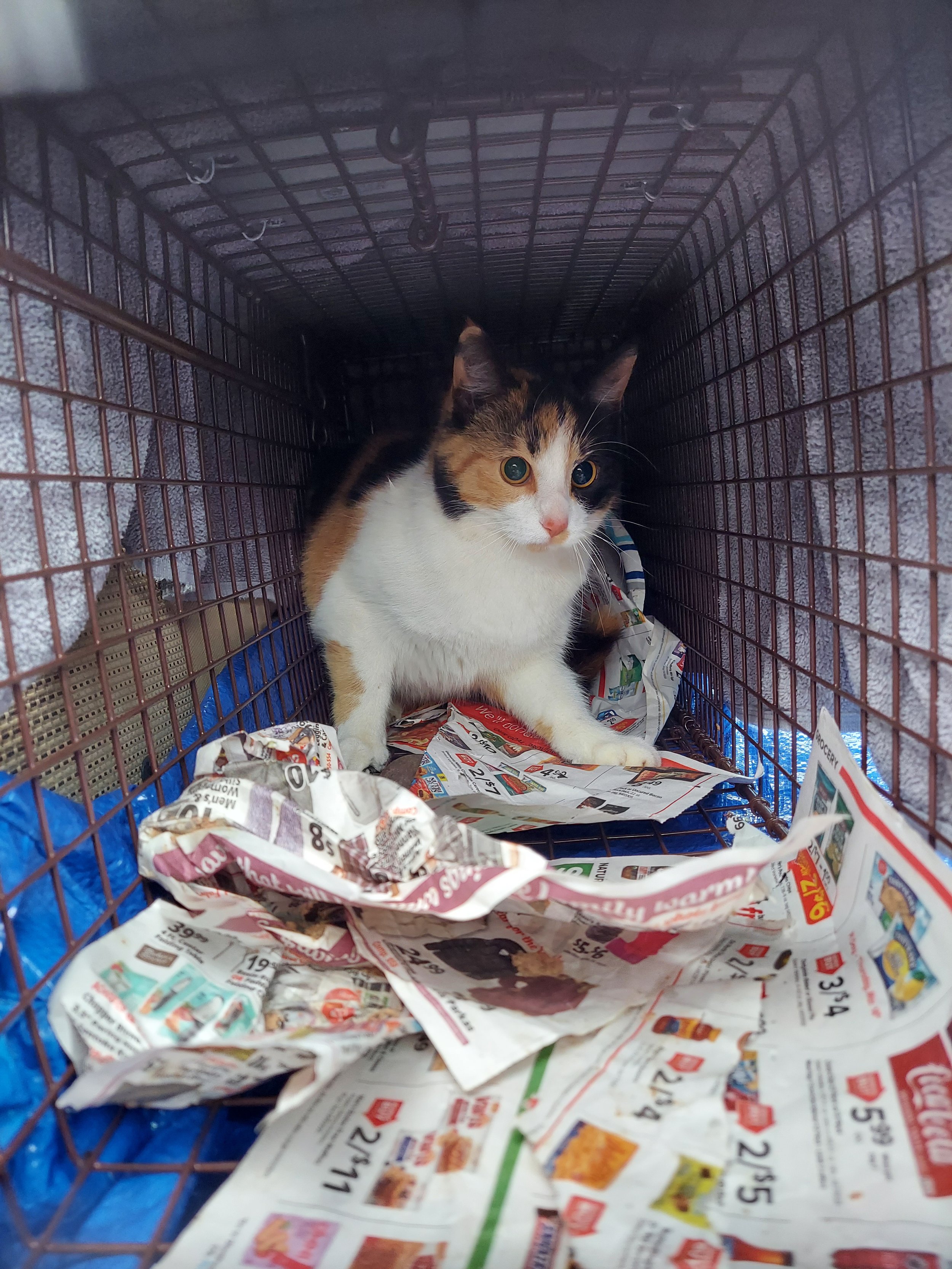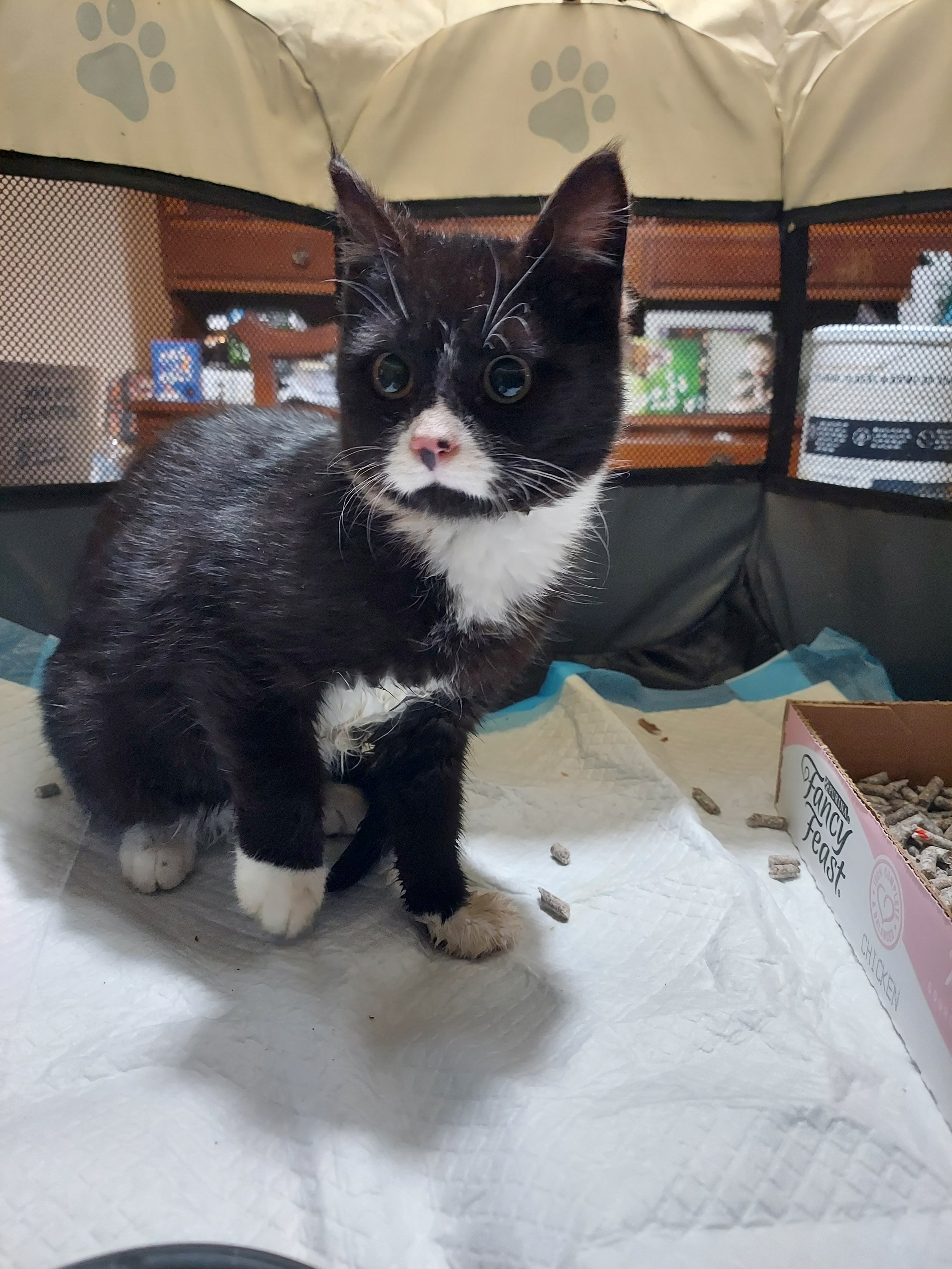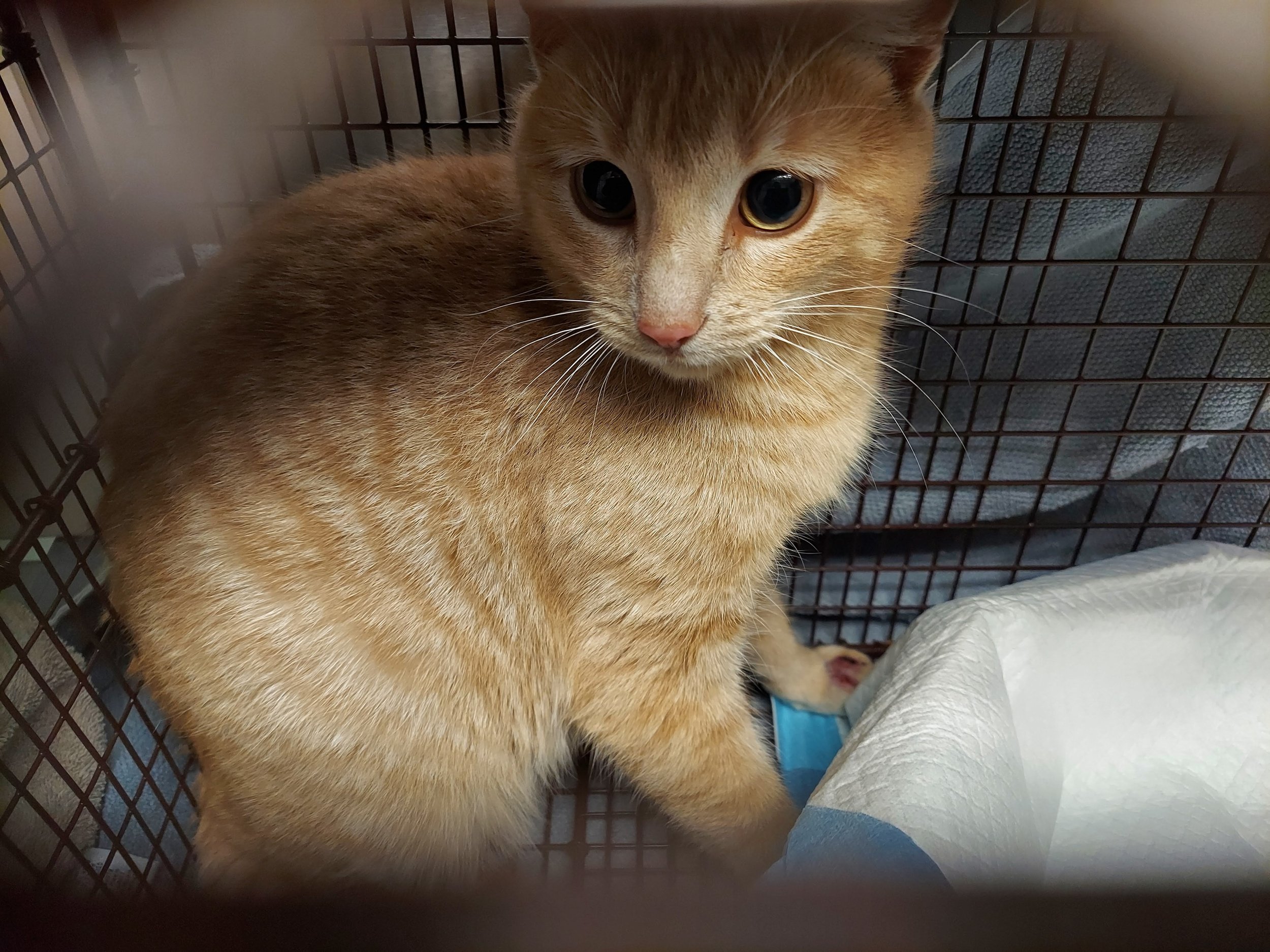How Our Superhero Trappers are Making a Difference for Community Cats
On March 9th, a note went out to the members of the Stray Cat Blues Trapping Team sharing that one of our volunteers, Erica, had been alerted about an orange kitty in Hatboro who was unable to bear weight on his/her paw.
Trapper Allissa responded by jumping into action that same day, reaching out to the people who had been feeding the hurt kitty. Unfortunately, it was raining that night, impeding immediate trapping efforts and compelling Allissa to postpone her rescue mission. She planned to go back the next day, once the rain stopped.
She coordinated with the feeders to ensure they would not be feeding that night or the following morning, so that the hurt kitty would be hungry enough to go into her trap, once she set it up in the morning. While Allissa's primary objective remained the capture and care of the injured cat, invaluable information gleaned from the caregivers revealed a broader situation. They disclosed that there were a number of additional cats on the property, including kittens. This expanded the scope of Allissa's mission, requiring comprehensive intervention to address the welfare of all cats involved.
The image we recieved
This is the photo that was submitted to us of the kitty with the injured paw.
The next morning—less than 24 hours after the original call for help—Allissa updated the team with an email that just said “Got him!” with a video attached of the hurt kitty going into the trap. Everyone was so relieved and so proud of Allissa for her quick, amazing work.
Allissa captured the moment that the hurt kitty entered the trap on video.
Though the kitty’s paw was bleeding, he was going to get the help he needed. Allissa was able to get an appointment for the next morning, March 11th, at one of our vet partners that treats feral kitties, Green Lane Veterinary Hospital, hoping that people will later donate to help cover the costs for his care.
Getting a look at the paw
Once in the trap, Allissa was able to see that the injured paw was bleeding and looked very painful.
Allissa got the hurt kitty to the vet, and discovered that as one of the feeders had suggested, the kitty was actually a female, and likely the mother of the kittens on the property. (When trapping an orange tabby, rescuers tend to assume it’s a male, since it’s known that about 80% of orange cats are male.) The vet was going to take x-rays that day and then keep her overnight to spay her the next day, since that day wasn't a surgery day.
That same day, March 11th, Allissa updated the team that she had now trapped a total of three young adults (including the injured kitty) and one kitten. It was an older kitten, but Allissa was hopeful that it had potential for socialization. She still had another kitten and one more adult left to trap at the location.
Allissa shared the update from Green Lane Vet on March 12th with the Stray Cat Blues team: Nothing was broken in her paw or leg! They removed the scabs and drained a large volume of pus from the wound and gave her a Convenia antibiotic injection. While Allissa had seen the obvious wound on top of her paw, the vet informed her that the wound was also on the bottom of her paw, leading the vet to believe she was bitten by something. Additionally, they had spayed her, which was fortunate because she was pregnant. Thankfully, this meant Allissa had saved her from not only the injured and infected paw but also from having to go through yet another cycle of raising kittens while living on the streets with an injured and infected paw.
Not broken!
Thankfully, the vet took x-rays revealing the kitty’s paw was not broken.
By 10pm on March 13th, Allissa reported to the team via email that after her whirlwind of the past few days, she had now trapped five of the six cats at this colony, including the injured, pregnant female cat and her two most recent kittens. Allissa had determined that while the kittens are older (about 4.5 pounds) they have potential for socialization. She had also trapped the two surviving kittens from her previous litter, a calico female and an orange and white male, who also show signs of being sociable.
The most feral one of the colony appears to be the injured female, though after all she’s been through, Allissa hopes that once she recuperates from her injury and her spay, perhaps her demeanor will change. The only cat Allissa still has to trap is an adult black cat who she assumes is the daddy to the kittens.
While thrilled to have been able to help all of these cats in a span of less than four days, the experience drained Allissa. She expressed to the team that it wasn’t the trapping that was so exhausting, but the fact that she and Erica had to expend so much energy begging and pleading with the residents who feed the cats to allow them to trap the cats and get them help.
This is a common (and frustrating) issue that trappers encounter out in the field. Sometimes people feeding colonies develop an emotional attachment to the cats they feed but then don't want to see them get the help they need, typically because they don’t want the cats to leave. In this case, it was like pulling teeth to even trap the injured cat to get her the help she desperately needed. Thankfully, in this case, volunteer Erica was able to convince the feeders that she and Allissa were just trying to help the cats.
Allissa ended her update to the team by saying, “I'm just sharing all this to say, I know this is hard work but I'm so glad we have such a great team who works so hard together. You are all amazing and I thank you for your dedication.”
Board Member Heather Heilman spoke for the entire team when she replied to Allissa’s email saying:
“Your tireless commitment to the welfare of community cats is incredibly inspiring. Your advocacy serves as a beacon of hope for these vulnerable kitties. Without your intervention, they would undoubtedly continue to endure unnecessary suffering. I am profoundly grateful for your invaluable assistance to Erica in managing this colony.
You are totally correct in highlighting that the greatest challenges often stem from human ignorance or indifference. Many people fail to recognize the profound impact their actions—or inaction—have on the lives of these animals. Educating the community about the importance of caring for community cats is crucial in ensuring their well-being.”
The kitty with the hurt paw has been named Blossom, as we are just entering spring and hope this name might help manifest her blossoming into becoming an indoor kitty. Blossom is staying on cage rest in Allissa’s care while her paw heals. Her paw is already looking better, though it's hard to tell yet if the paw is weight-bearing since she’s in a crate. She is not Allissa’s biggest fan right now, but her plan is to continue working with Blossom while she’s on her cage rest and see if she shows any progress.
Thankfully, if she ultimately doesn’t show any hope of socialization and needs to be released back to her colony location, she does have reliable feeders who can continue to care for her and hopefully be more proactive in the case of any future medical needs.
Considering that a study of 2,332 free-roaming female cats revealed an average of 1.4 litters per year with litters averaging three kittens per litter and approximately 75% of kittens having died or disappeared by six months of age, we at Stray Cat Blues know how crucial it is to tackle the cat overpopulation crisis from every angle possible. With those types of statistics, helping community cats through Trap-Neuter-Return (TNR) is one of the most crucial components of solving this crisis, along with fostering, adopting instead of buying from breeders, and educating the public on all of these topics.
At Stray Cat Blues, TNR is a paramount component of our mission. However, our dedicated yet modest Trapping Team finds itself stretched thin, yearning for additional support. Trapping can be challenging, and at times, our trappers confront narratives that lack the favorable outcome experienced by this kitty and her fellow colony members. But, these innocent creatures were previously let down by humans, and the gratification derived from compensating for that shortcoming transcends those challenging times.
If you want to be a superhero by helping community cats, we encourage you to fill out a volunteer form to join our mission to alleviate the plight of community cats. If you are not able to get out in the field, there are other ways you can support our Trapping Team, such as volunteering to transport the kitties they trap to and from their spay and neuter appointments or making a monetary donation toward the efforts. We promise that if you love cats, you’ll never find a more rewarding thing to become involved with.
Learn more about trap-neuter-return and our TNR program by clicking here. If you’d like to help us get help for other kitties like Blossom, you can donate items from our Amazon Wishlist by clicking the button below.
